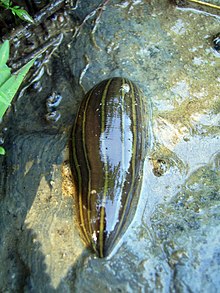
Much like insects, ex-boyfriends have a cyclical life span and undergo several notable metamorphoses throughout their typically short-lived lives.
In their larval stage. ex-boyfriends are characteristically underdeveloped and require minimal maintenance. They tend to be sedentary in terms of relationship growth and feed on the female for any growth that does occur in this stage.
The amount of time spent in the larval stage varies greatly, however within several months, ex-boyfriends make an unexpected and often overwhelming metamorphosis into what is technically called their "clingy" stage. Most women, after nursing the creature in the larval stage, are impatiently awaiting this development and some like to refer to the clingy stage with reference to a similar phenomena in nature as the "butterfly" stage.
The creature displays a stark change in disposition after this change takes place. They tend to take heightened interest in both the female and relationship, develop an often smothering reliance of the female for any combination of physical and mental support and experience increasing amounts of both jealousy and a desire to completely overtake the female's life. Markedly different than the larval stage, the female generally retains control during the "butterfly" stage, but the ex-boyfriend still displays occasional flightiness, spontaneous disinterest and, of course, ever present but typically isolated displays of asshole-ism.
Time spent in the "Clingy" or "butterfly" stage varies even more so than time spent in the larval stage. The final chapter in the life of an ex-boyfriend is commonly known as the parasitic stage. Metamorphosis into this final stage can be sparked by any number of events in the life of an ex-boyfriend.
The parasitic stage is distinguished by an end to the relationship. The height of the parasitic phase occurs in the first six months after the closing of the relationship with the female is finalized. The ex-boyfriend voluntarily or involuntarily attaches itself to the life of the female, usually in an obsessive, oppressive or offensive manner. This behavior might involve a physical relocation of it's normal resting place or a restructuring of it's friendships and other outside relationships, focused only on increasing unwanted proximity to the female.
Over an extended period of time, the ex-boyfriend will repress the more distinguishable marks of the parasitic phase, in attempt to attract the original or perhaps other females. However, the parasitic phase is a permanent and final chapter in the lifespan of an ex-boyfriend and though parasitic behaviors may subside, the ex-boyfriend can and will revert back to the height of the parasitic phase with little to no warning.

Too bad your writing talents are wasted on such mundane topics!
ReplyDelete